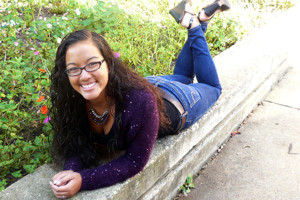With three consecutive terrific football seasons, Middletown High School fans are crowding the stadium to see their Knights play. So many members of the community come out for the Friday night home games that seating has become scarce. And the lack of seats has many fans irritated.
“For as large a crowd as the football team draws, we need more seating,” MHS teacher Tracey Athey said.
Danny Main, MHS parent, said, “It is unacceptable to charge people to stand.”
“We have the best fan base in the county,” said MHS parent Scott Montgomery. “If you go to any other games, there’s like double our seating and it’s not filled.”
While the solution of adding more bleachers seems easy enough, the answer is not that simple. Because the current stadium seating was built approximately ten years ago, it is not handicapped accessible. Consequently, for more bleachers to be added, the current stands would have to be entirely taken out and rebuilt – a task that would total about $500,000 in cost.
When the Sports Boosters started the stadium project about six years ago, part of the plan included making new handicapped accessible seating. The first phase of the project consisted of putting in the new field and scoreboard. The second phase was to put in new seats, concession stands, and bathrooms. Unfortunately, the cost of the entire project totaled about $3.5 million, all of which had to be funded by the community.
“The economy tanked right after we put the field in, and all the money dried up from donations that we couldn’t get,” said Tim Ambrose, MHS Athletic Director. “So the plan was there to do that, but the money was not. And there still is no money available to do any additional seating at this time.”
With the lack of funds and clear need for more seating, there have been many thoughts on ways to create more seating without the cost of rebuilding larger seating areas.
MHS teacher Tim Leber suggested a cost-efficient way to accommodate the growing fan base. Leber said that one or two of the bleachers on the visitor’s side should be shifted away from the rest of the bleachers and for a barrier to be put between the resulting separate sections. Then those one or two bleachers on the away side could be used for Middletown fans.
Some Knights fans would have to choose between standing on the home side or sitting on the opposing side of the field. Given this option, MHS junior Karlye Pick remarked, “I still wouldn’t sit there. I want to be with everyone and be behind my team.”
Leber added, “For all the other events that we have in the stadium, our seating is adequate – it’s just those five Friday night home football games each fall season. If we had the money, sure, because it’s an issue, but we’re still trying to pay for the field… It’s not worth it to pay that much money for five nights.”
MHS assistant football coach Kevin Lynott suggested another solution. “There have been thoughts or ideas tossed around the community to take extra bleachers and maybe put them in the end zone on that D-ring area,” he said. “If we put some extra bleacher seating there, that could be a way that wouldn’t be as costly and could be a fill-in until permanent seating could be put in… Every seat would help, so just adding some extra seats might be a way to move forward and try to do something different rather than what’s happening now.”
Moving the band off the existing bleachers has been considered as a solution.
“A few years ago it would have been okay. But, in the last four years, the stadium has become so packed that the band needs to move elsewhere,” said Jeff Raines, whose kids graduated from MHS. “Ten years ago there were separate stands [for the band] that sat down on the track. I think they need to go back to that.”
Keller Falkenstein, MHS junior, said, “The band takes up about a fourth of the seating. I say they should go behind the goal post or on the track.”
However, MHS Assistant Principal Michael Watson said, “It’s not as simple as just moving the band, because you’re still not going to have enough seating.”
The away side and the home side of the stadium combine to seat approximately 2,000 people, while major football games in 2012 attracted as many as 4,000 fans, according to Watson.
For many years overflow spectators took a seat on the grassy hill next to the bleachers despite a rule prohibiting use of the hill. Recently, the rule against seating on the hill was enforced, causing further crowding on the bleachers.
Middle school students miss the fun of congregating on the hill. “We like sitting here,” they said in unison when questioned about the policy at a game last fall. “We don’t want to stand around with the adults.”
“It’s a safety issue for us,” said Watson. “Like at our last game: The grass is wet. Students are unattended. Their adults are not close by supervising them, and they’re running up and down the hill, sliding and pushing each other. So it becomes a safety issue for someone who might get hurt.”
The reality is that the Middletown High School football fans will continue to attend games to cheer their fantastic team regardless of inadequate seating. Unless the fans get skinnier and a lot more friendly, this will continue to be a problem. The off-season offers time to come up with a more likely solution.



